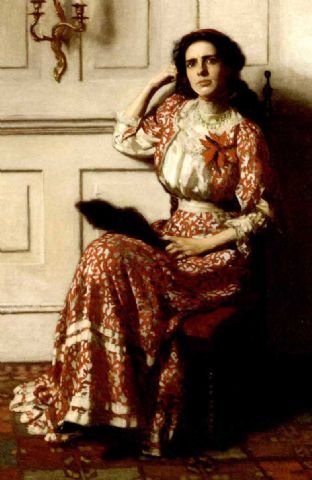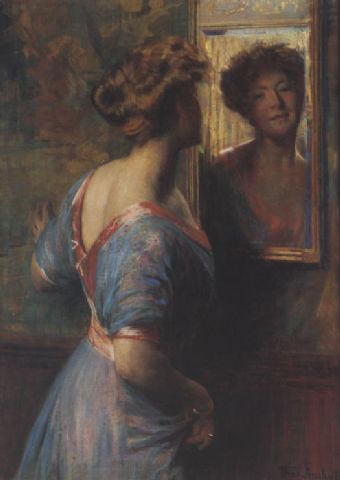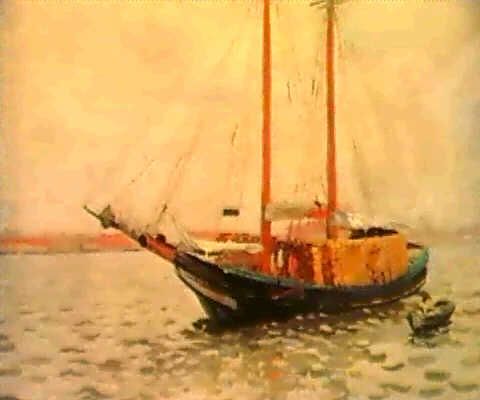Thomas P. Anshutz (1851-1912)
Get a Thomas P. Anshutz (1851-1912) Certificate of Authenticity for your painting (COA) for your Thomas P. Anshutz (1851-1912) drawing.
For all your Thomas P. Anshutz (1851-1912) artworks you need a Certificate of Authenticity (COA) in order to sell, to insure or to donate for a tax deduction.
Getting a Thomas P. Anshutz (1851-1912) Certificate of Authenticity (COA) is easy. Just send us photos and dimensions and tell us what you know about the origin or history of your Thomas P. Anshutz (1851-1912) painting or drawing.
If you want to sell your Thomas P. Anshutz (1851-1912) painting or drawing use our selling services. We offer Thomas P. Anshutz (1851-1912) selling help, selling advice, private treaty sales and full brokerage.
We have been authenticating Thomas P. Anshutz (1851-1912) and issuing certificates of authenticity since 2002. We are recognized Thomas P. Anshutz (1851-1912) experts and Thomas P. Anshutz (1851-1912) certified appraisers. We issue COAs and appraisals for all Thomas P. Anshutz (1851-1912) artworks.
Our Thomas P. Anshutz (1851-1912) paintings and drawings authentications are accepted and respected worldwide.
Each COA is backed by in-depth research and analysis authentication reports.
The Thomas P. Anshutz (1851-1912) certificates of authenticity we issue are based on solid, reliable and fully referenced art investigations, authentication research, analytical work and forensic studies.
We are available to examine your Thomas P. Anshutz (1851-1912) painting or drawing anywhere in the world.
You will generally receive your certificates of authenticity and authentication report within two weeks. Some complicated cases with difficult to research Thomas P. Anshutz (1851-1912) paintings or drawings take longer.
Our clients include Thomas P. Anshutz (1851-1912) collectors, investors, tax authorities, insurance adjusters, appraisers, valuers, auctioneers, Federal agencies and many law firms.
We perform Thomas Anshutz art authentication, appraisal, certificates of authenticity (COA), analysis, research, scientific tests, full art authentications. We will help you sell your Thomas Anshutz or we will sell it for you.

A Rose
1907, oil on canvas, 147.3 x 111.4 cm.
Metropolitan Museum of Art, New York
Anshutz was born in rural Kentucky and spent most his childhood there. His family moved to Philadelphia, PA when he was nineteen years old. Shortly after moving to the East Coast, he enrolled at the National Academy in New York City. He transferred to the Pennsylvania Academy of Fine Arts in Philadelphia in large part so he could study with Thomas Eakins (1844-1916). He became Eakins’ teaching assistant in drawing, painting, and anatomy.

Seated Woman with Bonnet in Interior
signed, oil on board, 26 x 19.7 cm.
He and Eakins were keenly interested in photography, with which they experimented. In 1881, Anshutz wrote to fellow instructor John Wallace on the then incipient art form:
“[Eadweard] Muybridge [1830-1904] as you know is carrying out his scheme over at the University. Muybridge has also a machine for taking views on one plate, of moving objects, by opening and closing the camera rapidly at the rate of about two exposures per second. This shows the moving object not as a continuous smear but shows one clear view at every two or three inches of advance. The exposures are made by two large discs with openings cut around their circumferences.”
Anschutz became a full instructor at Pennsylvania Academy of the Fine Arts in 1881 and he succeeded Eakins as head of the school in 1886. Among his students were: Charles Demuth, Robert Henri, William Glackens, John Marin, John Sloan, Charles Sheeler, Elizabeth S. Jones, and Stirling Calder. In 1887, he was forced to resign from the Pennsylvania Academy for his “unorthodox teaching methods.”

Portrait of Rebecca H. Whelan
1910, oil on canvas, 152 x 101.6 cm., signed
In 1892, Anshutz married and moved to France. There he studied at the Julian Academy in Paris. He wrote from Paris to the new head of the Pennsylvania Academy of the Fine Arts: “Art, whether inborn or acquired, is based on knowledge and knowledge of facts. And while the ability to play upon these facts is above them, it cannot be without them. As for the intellectual ideas which use art as a means of expression, they are not taught in a life class.” (Pennsylvania Academy of the Fine Arts Archives)
Anschutz returned to the U.S. in 1898, and started an art school near Philadelphia in Fort Washington, called the Darby School of Painting.

A Passing Glance
undated, pastel on canvas, 106.7 x 76.2 cm.
Anshutz returned to the Pennsylvania Academy of the Fine Arts in 1909 as Director and he succeeded William Merritt Chase (1849-1916) in that position. The next year, in 1910, he was elected to the National Academy in New York.

Lumber Boat
undated, oil on canvas, 41.5 x 61 cm.
In 1911, Anschutz made his final trip to Europe, spending most of his time in France. He died in 1912 at his country home in Fort Washington, Pennsylvania.

Old House, Fort Washington, Pennsylvania
undated, watercolor on paper, 17.1 x 25.4 cm.
Pennsylvania Academy of the Fine Arts, Philadelphia
Reviews
1,217 global ratings
5 Star
4 Star
3 Star
2 Star
1 Star
Your evaluation is very important to us. Thank you.
